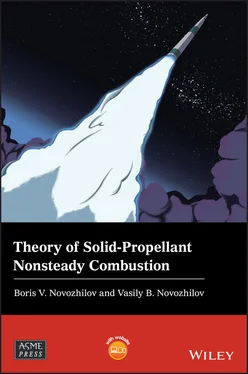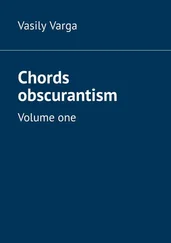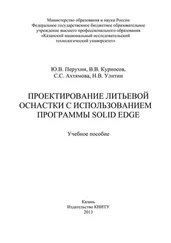The same applies to experimental data which is used for comparison with the theory outcomes. Observation of various unsteady combustion phenomena are associated with significant difficulties. At best, relative errors are of the order of tens of percent. The theory, however, predicts a number of quite distinctive qualitative effects,for example the existence of the natural frequency of propellant combustion and, as a consequence, a resonance response of the nonsteady burning rate to harmonically oscillating pressure. Such effects are actually being observed, and it is usually possible to reconcile the theory and experimental results quantitatively for the values of parameters within the experimental uncertainty region.
Before briefly outlining the monograph content, let us notice that the overwhelming majority of presented results are obtained using a universal approach. The following is its mathematical formulation.
A one‐dimensional unsteady heat transfer equation

is considered, along with the relevant boundary and initial conditions



Nonsteady relations between the burning rate v ( τ ) and the surface temperature ϑ ( τ ), on the one hand, and some external parameter η ( τ ) (most often pressure) and the temperature gradient ϕ ( τ ) = ( ∂θ / ∂ξ ) ξ = 0, on the other

are prescribed.
There must also be prescribed the function

or some auxiliary equation which determines this function.
A specification of the functions Φ u( ϕ , η ) and Φ s( ϕ , η ), and the external parameter dependence on time η ( τ ) lead to a class of problems that are related to rapid development in recent decades in the multidisciplinary area of synergetics (Mikhailov 2011).
The majority of results in this area are obtained by a numerical analysis of various model sets of differential equations. Most often, the systems with a finite number of degrees of freedom are considered.
The formulation discussed above is probably the simplest for distributed dynamical systems. Despite this simple form, however, the set of system behaviour scenarios is quite rich. For example (and this is demonstrated in the relevant section of the book), studying the system behaviour under constant external conditions is directly related to the problem of turbulence. Variation of one of the control parameters leads to successive bifurcations of combustion regimes, ending up with chaotic behaviour.
In contrast to the majority of studied examples of dynamical systems, the model described above expresses real physical and chemical processes. Within the framework of the presented formulation, such practically important phenomena as propellant burning interaction with the acoustics of the combustion chamber, combustion extinction under depressurization, burning stability under constant pressure, etc. may be investigated.
Since experimental data on steady‐state combustion are an essential input into the theory, this book begins with an establishing chapter describing the steady‐state burning regime and presenting various fuel property dependencies on external conditions. The theoretical estimations and experimental results provided in the first chapter are necessary for a justification of nonsteady combustion theory. Analytical dependencies of the burning rate and surface temperature on external parameters (i.e. steady‐state burning laws) are useful for quantitative analysis. Their physically sensible form may only be obtained from the current understanding of steady‐state combustion regimes of the simplest systems. These issues are also discussed in the first chapter.
The second chapter, which is fundamental for the monograph, formulates major assumptions of the theory of nonsteady combustion of solid rocket fuels. A simplified case of constant propellant surface temperature (Zeldovich theory) is considered in detail. The two formulations of the ZN theory, differential and integral, are then presented.
In the first of these formulations, temperature distribution in the condensed phase is a necessary element of consideration. This profile, however, is rarely used in practice. It turns out that an alternative, integral formulation, involving only the most relevant quantities – pressure and burning rate, as an example – may be developed. Readers interested in a formal mathematical justification of the theory should pay attention to the last section of this chapter.
The third chapter considers propellant combustion at a constant pressure. In one‐dimensional problem formulation, the stability criterion for the steady‐state combustion regime, relating burning rate and surface temperature derivatives with respect to initial temperature is obtained. The possibility of two‐dimensional instability is discussed using the example of the simplest combustion system. Numerical modelling is used to investigate nonsteady modes of propellant combustion under constant pressure beyond the stability boundary of the steady‐state regime. The simplest propellant combustion model containing just two control parameters is considered. With a fixed value of one of these, the other plays the role of a bifurcation parameter. It is demonstrated that on variation of the bifurcation parameter, the system may transit from the steady‐state to the chaotic combustion regime following the Feigenbaum scenario. A sequence of period doubling bifurcations of the burning rate oscillations, leading eventually to a chaotic combustion regime, is studied. A comparison with experimental data is discussed in the last section of the chapter.
The following three chapters are devoted to the influence of external parameters, that is, pressure, erosive gas stream, and thermal radiation, on propellant combustion under periodically varying pressure. Practical interest in these processes is due to the need to understand the causes of the development of various nonsteady effects, for example soft or hard excitation of burning rate and pressure oscillations, superimposed on the designed steady‐state solid rocket motor regime.
First, the problem of combustion and acoustics interaction ( Chapter 4) is considered in the linear approximation with the burning rate amplitude being proportional to pressure amplitude. An analytical expression for the response function of the burning rate to oscillating pressure is obtained. Furthermore, its properties and relation with the most important property of burning propellant surface (acoustic admittance) are discussed. Then, the notion of response functions of higher orders, with respect to pressure amplitude, is discussed. These would find an application in investigations of sustained and transitional regimes with finite burning rate and pressure amplitudes. A conducted nonlinear analysis reveals a fundamentally new phenomenon: period doubling bifurcations of burning rate oscillations that occur on an increase of amplitude or change of frequency of pressure oscillations. A sequence of bifurcations leading eventually to the chaotic combustion regime is investigated for a propellant combustion model containing a minimal number of parameters in nonsteady burning laws.
Читать дальше


















